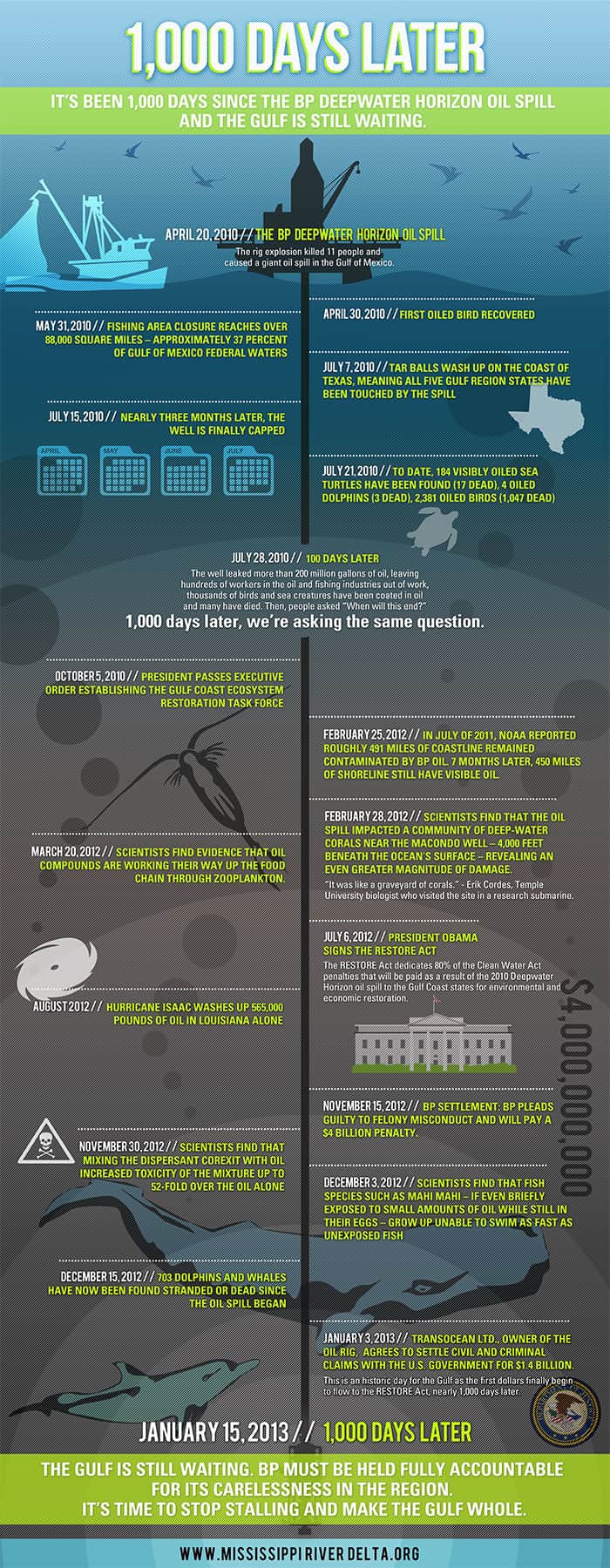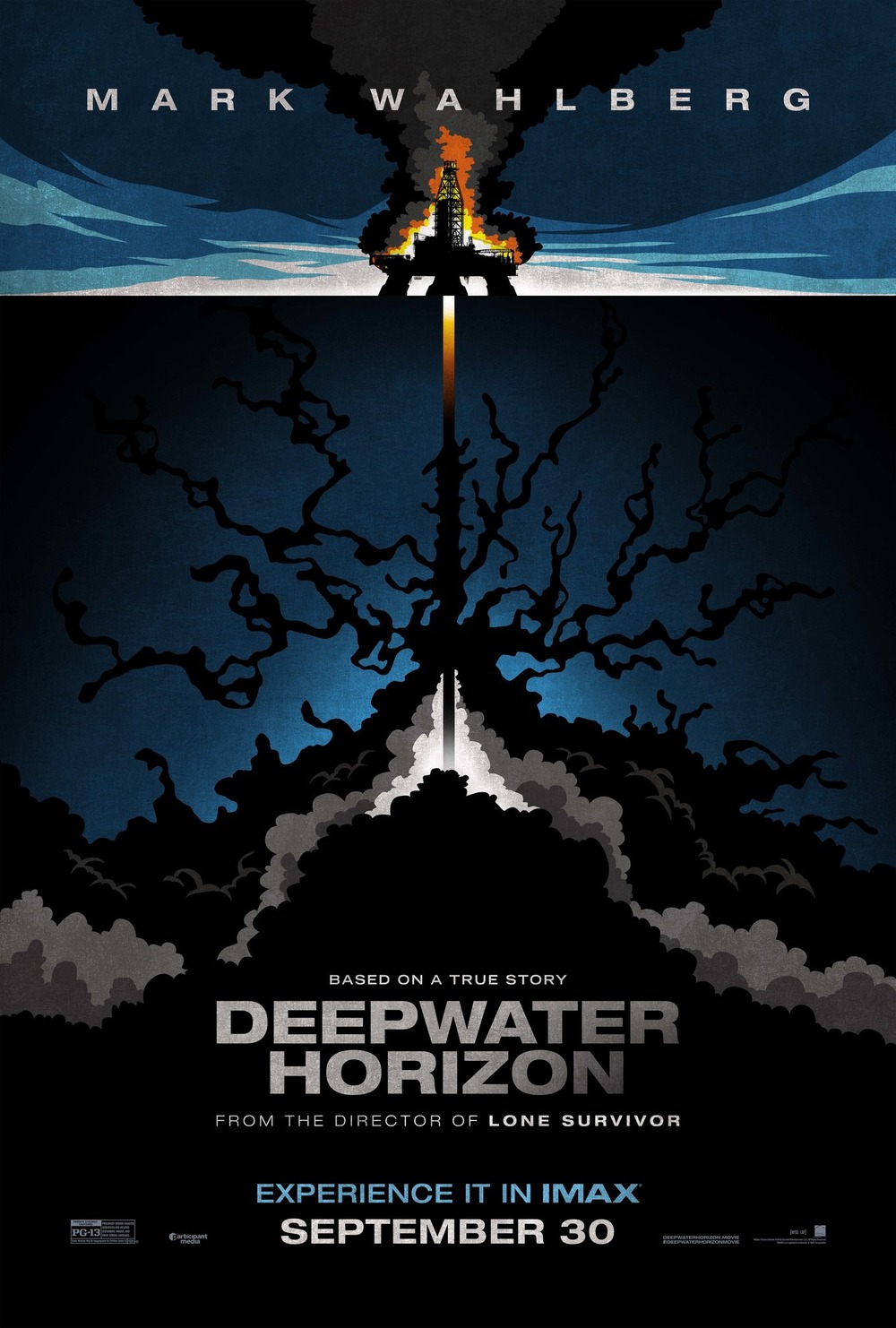

As engineers struggled to develop and install technologies to cap the well over coming weeks, oil continued to spill into the Gulf. The problems now became twofold: fixing the wellhead to stop the flow of oil and protecting the Gulf of Mexico’s vulnerable fish, wildlife, and coastal communities from the rapidly spreading oil. To learn more about how safety measures at the wellhead failed, view the multimedia presentation “ Investigating the Cause of the Deepwater Horizon Blowout” by the New York Times.

Engineers were going to have to find new solutions. Technologies in place at the wellhead to prevent oil from pouring into the water in case of emergency weren’t working. Soon, another tragedy emerged: crude oil was gushing into the surrounding Gulf from the now “blown out” wellhead submerged under 5000 feet of water. It took almost two days to extinguish the flames and by then, the drill rig had begun to drift and sink. They perished as the enormous rig burned. Eleven of those crew members didn’t make it. Flames from the 14 story high rig leapt even higher into the air and the onboard crew headed for lifeboats or dove into the water for safety. Photo courtesy of the US Coast Guard.Īt 10 pm on April 20, 2010, BP’s Deepwater Horizon oil drill rig, 41 miles off the coast of Louisiana in the Gulf of Mexico, exploded. Multiple Coast Guard helicopters, planes and cutters responded to rescue the Deepwater Horizon’s 126 person crew. A Coast Guard MH-65C dolphin rescue helicopter and crew document the fire aboard the mobile offshore drilling unit Deepwater Horizon, while searching for survivors. Platform supply vessels battle the blazing remnants of the off shore oil rig Deepwater Horizon. You will also read newspaper articles documenting how SkyTruth and university scientists made a difference, and explore how satellite information and input from citizen scientists can help address environmental disasters. In this activity you will look at the same satellite images used by SkyTruth to track the oil spill, measure its growth over time, and calculate the volume of oil leaking into the Gulf.

In July 2010, almost 3 months after the oil well exploded, BP managed to cap the well and stop the spill. News media reported these results to the public and government officials, and eventually government scientists calculated the true size of the spill. But a small non-profit organization called SkyTruth used satellite imagery to estimate the size of the spill. No one was sure how much oil was spilling into the Gulf during this time or how to fix the well to stop oil from fouling Gulf waters. For months scientists tried to contain the spill to protect fish, wildlife and communities along the Gulf shore.

In April 2010, the largest accidental oil spill in the world’s history occurred in the Gulf of Mexico when BP’s Deepwater Horizon oil well exploded.


 0 kommentar(er)
0 kommentar(er)
